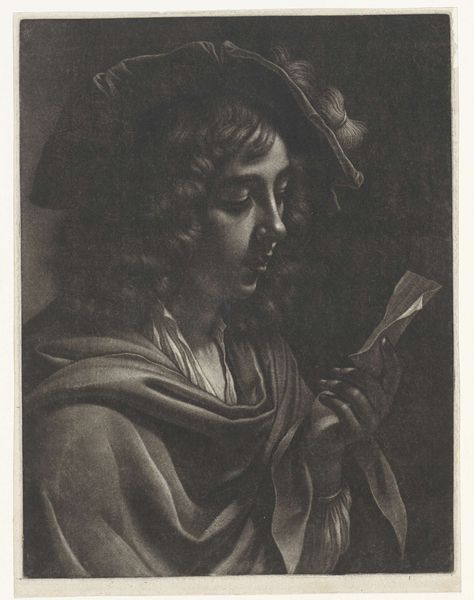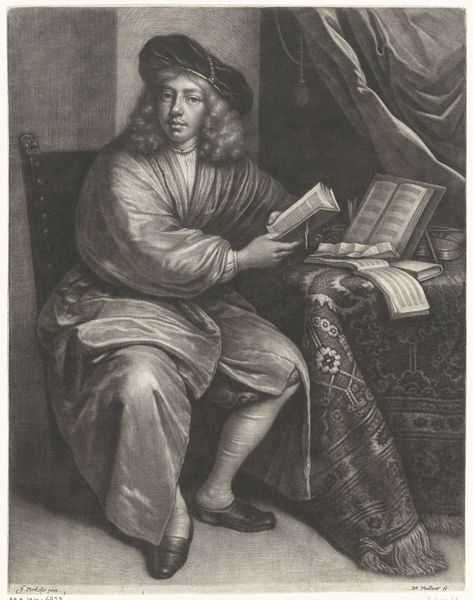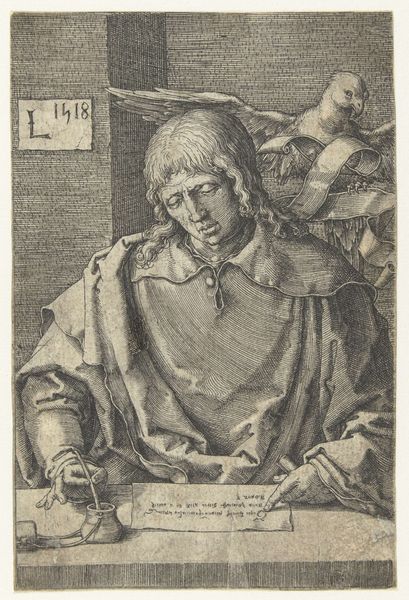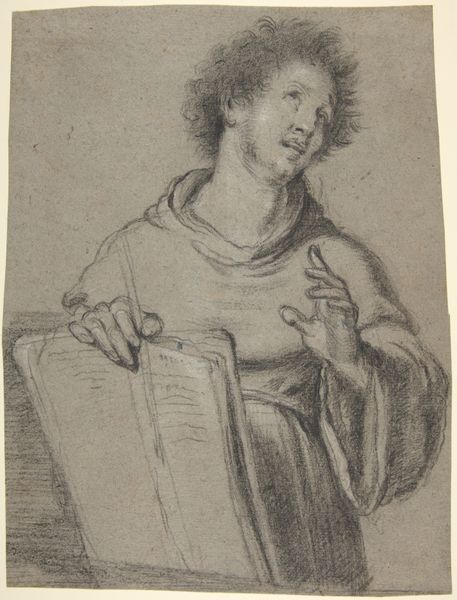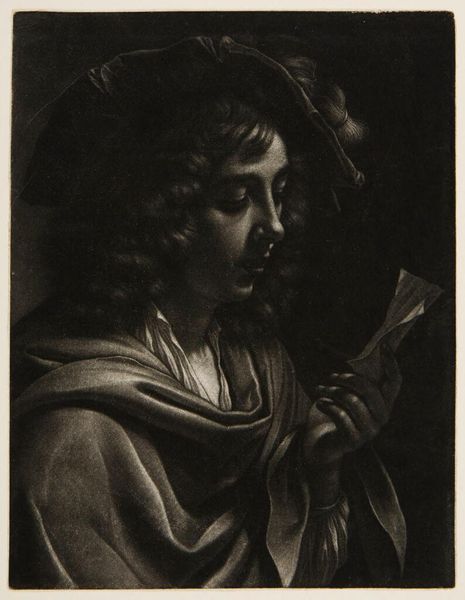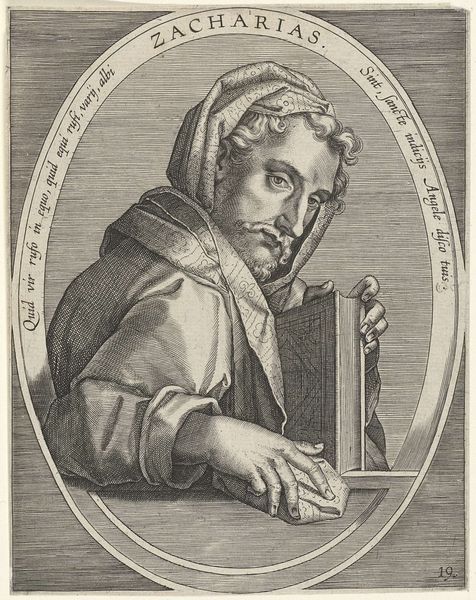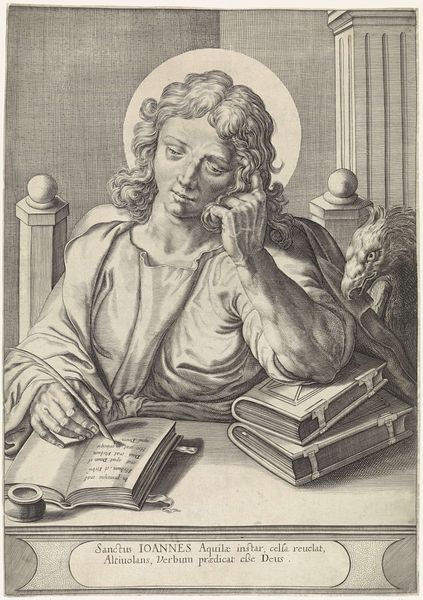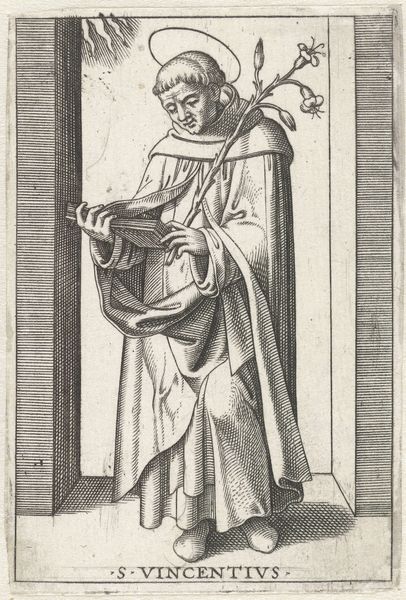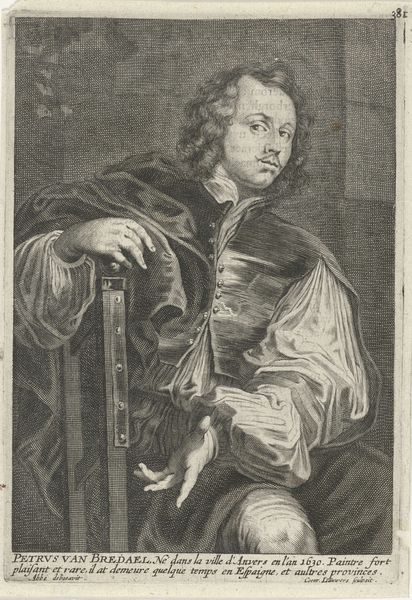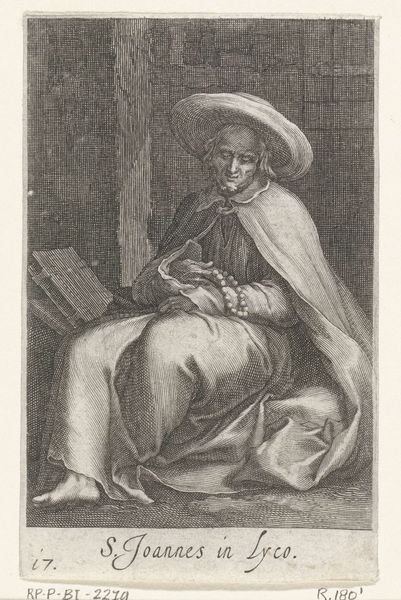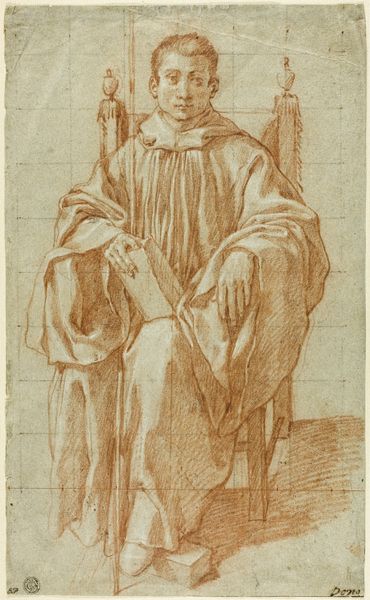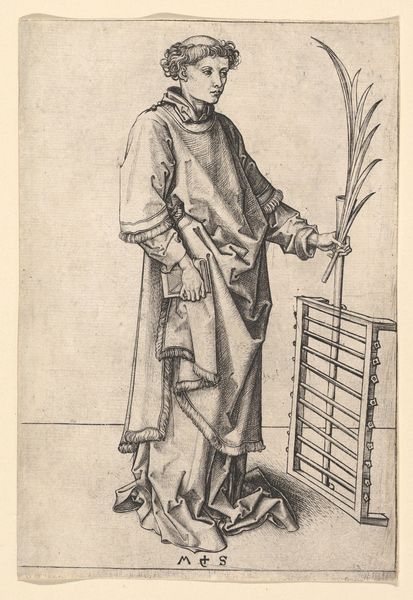
painting, oil-paint
#
portrait
#
self-portrait
#
baroque
#
dutch-golden-age
#
painting
#
oil-paint
Copyright: Public domain
In 1667, Frans van Mieris the Elder, painted a self-portrait at the age of 32. The canvas offers a window into the life and status of an artist in the Dutch Golden Age. Van Mieris presents himself with the tools of his trade—palette, brushes, and easel—signaling his profession. Note the fine clothing and confident gaze, reflecting the rising status of artists in Dutch society, where a burgeoning merchant class created a demand for art outside of the traditional aristocratic and religious patronage systems. The inscription on the stone plinth, “AETAT 32 ANNO 1667” serves as a declaration of identity and accomplishment. The Dutch Republic valued realism and technical skill, and artists like Van Mieris catered to the tastes of their upwardly mobile clientele. The art market and the institutions that support it, such as artists' guilds, played a crucial role in shaping artistic production. To understand the complexities of this work more fully, you might research the economic conditions of the Dutch Golden Age and the role of the Guild of Saint Luke in regulating artistic practice. Through this, we can consider how social and institutional factors influence the creation and reception of art.
Comments
No comments
Be the first to comment and join the conversation on the ultimate creative platform.
